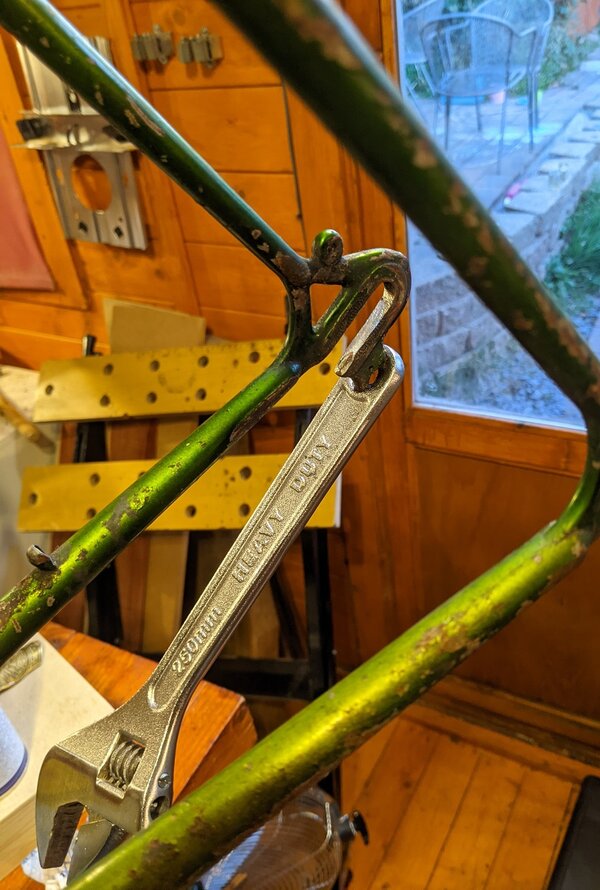I totally agree - the forks are probably a write-off or at least a job for an experienced frame builder if anything remotely dodgy comes up on closer inspection. This is a very serious amount of bending that the crown was not designed for, and the consequences of any fork failure are severe.
But here's some food for thought for the twitching sphincter crowd when it comes to other repairs:
Riding a bike is a risky activity. A sensible risk averse individual will take reasonable steps to mitigate that risk.
How many people here regularly
- Ride a bike with DT shifters that require you to take the hands off the main controls (steering and braking) to change gear. [And gear changes often happen at the time when something's happening on the road.]
- Ride bikes with retro brake caliper designs. Voluntarily increasing their stopping distance compared to more efficient modern brakes.
- Ride on chromed rims for extra retro points. Voluntarily doubling (?) stopping distance in the wet.
- Ride with canti brakes and knobblies without a cable catcher .
.
- Choose not to use a torque wrench when assembling a bike, completely disregarding critical manufacturers' guidance.
- Ride old frames with unknown history, potential hidden accident damage and rust.
- Ride at speeds they know they shouldn't or on dangerous trails.
Cheer up fellas.
But here's some food for thought for the twitching sphincter crowd when it comes to other repairs:
Riding a bike is a risky activity. A sensible risk averse individual will take reasonable steps to mitigate that risk.
How many people here regularly
- Ride a bike with DT shifters that require you to take the hands off the main controls (steering and braking) to change gear. [And gear changes often happen at the time when something's happening on the road.]
- Ride bikes with retro brake caliper designs. Voluntarily increasing their stopping distance compared to more efficient modern brakes.
- Ride on chromed rims for extra retro points. Voluntarily doubling (?) stopping distance in the wet.
- Ride with canti brakes and knobblies without a cable catcher
- Choose not to use a torque wrench when assembling a bike, completely disregarding critical manufacturers' guidance.
- Ride old frames with unknown history, potential hidden accident damage and rust.
- Ride at speeds they know they shouldn't or on dangerous trails.
Cheer up fellas.
Last edited:
